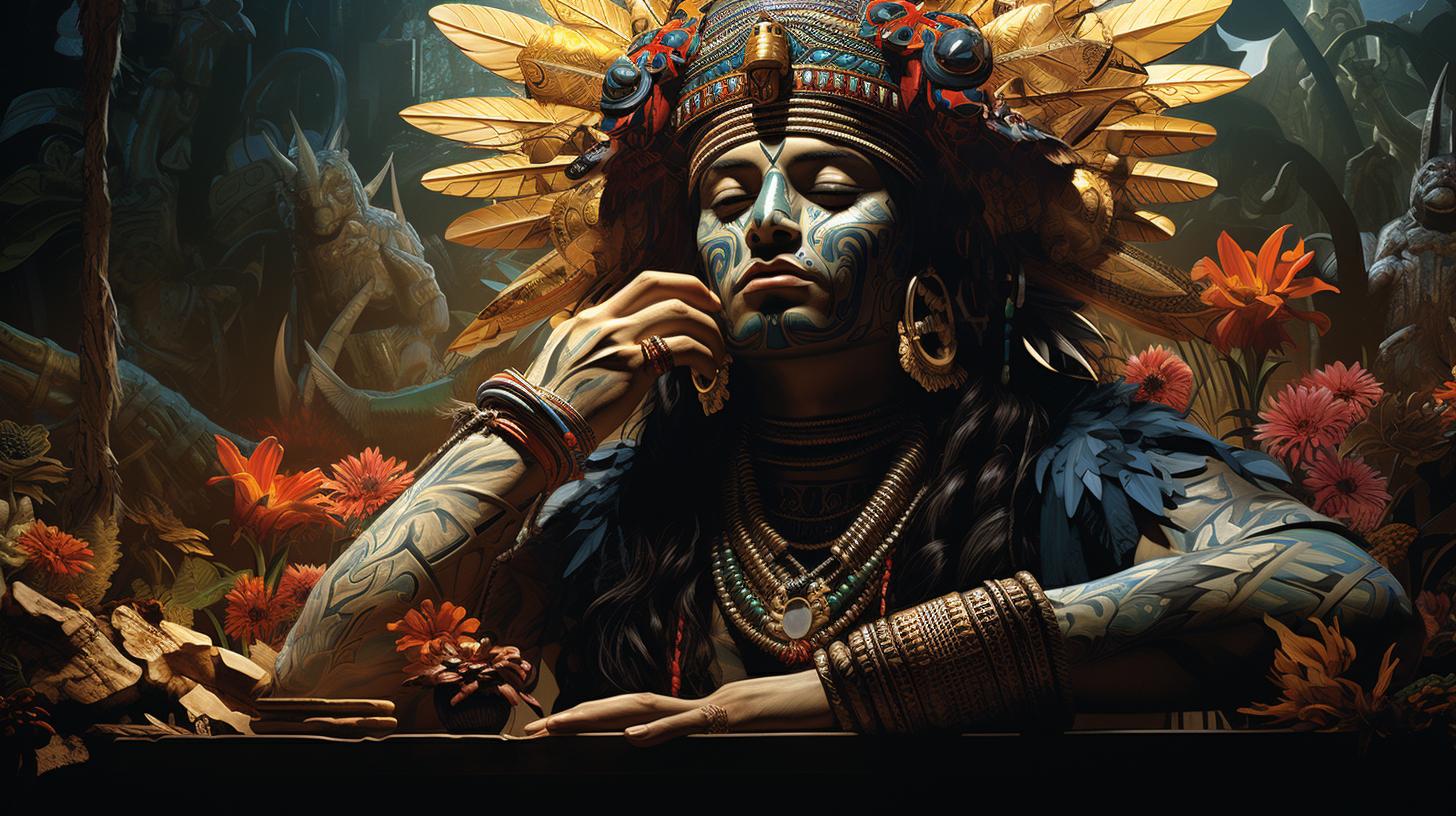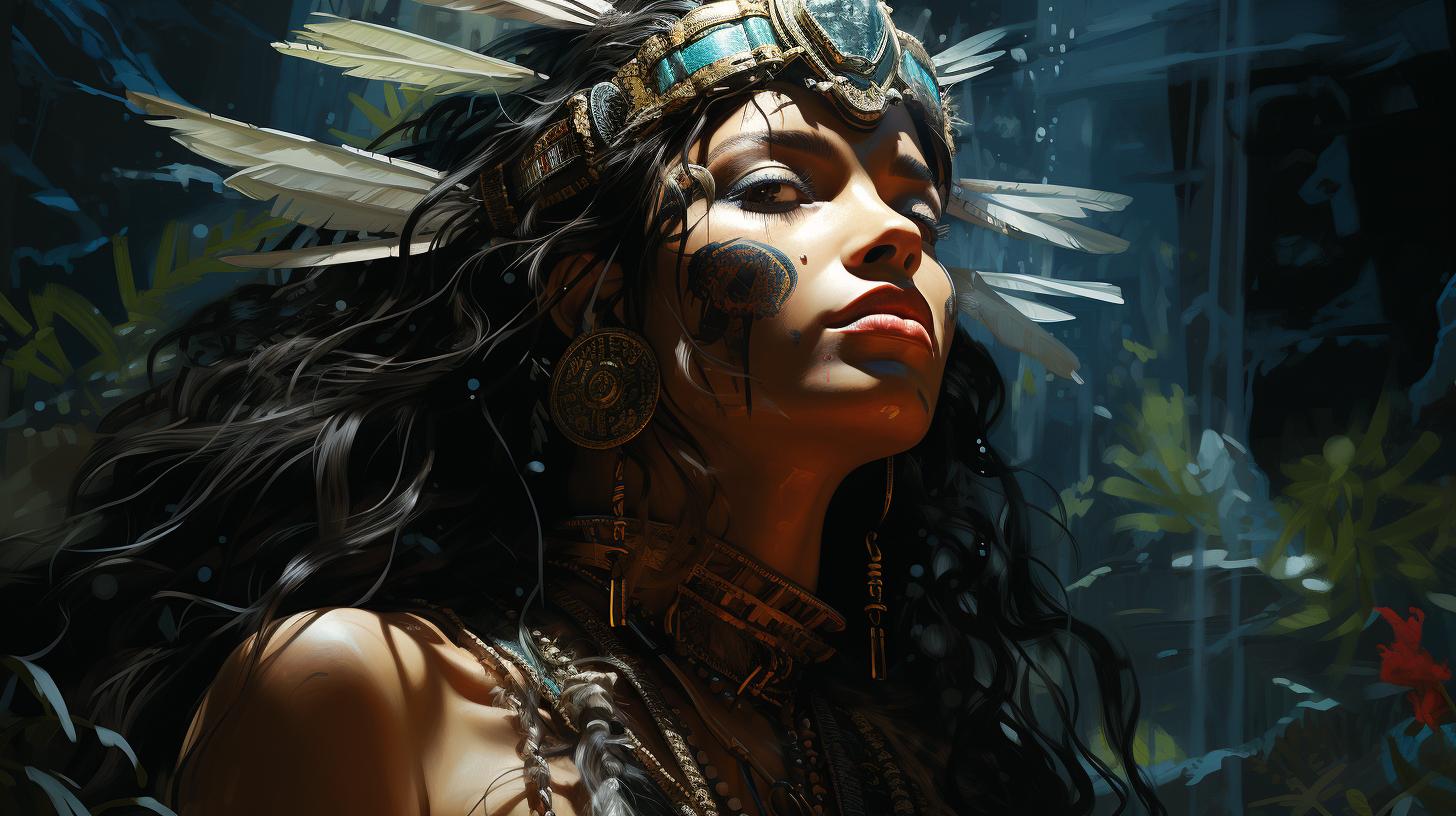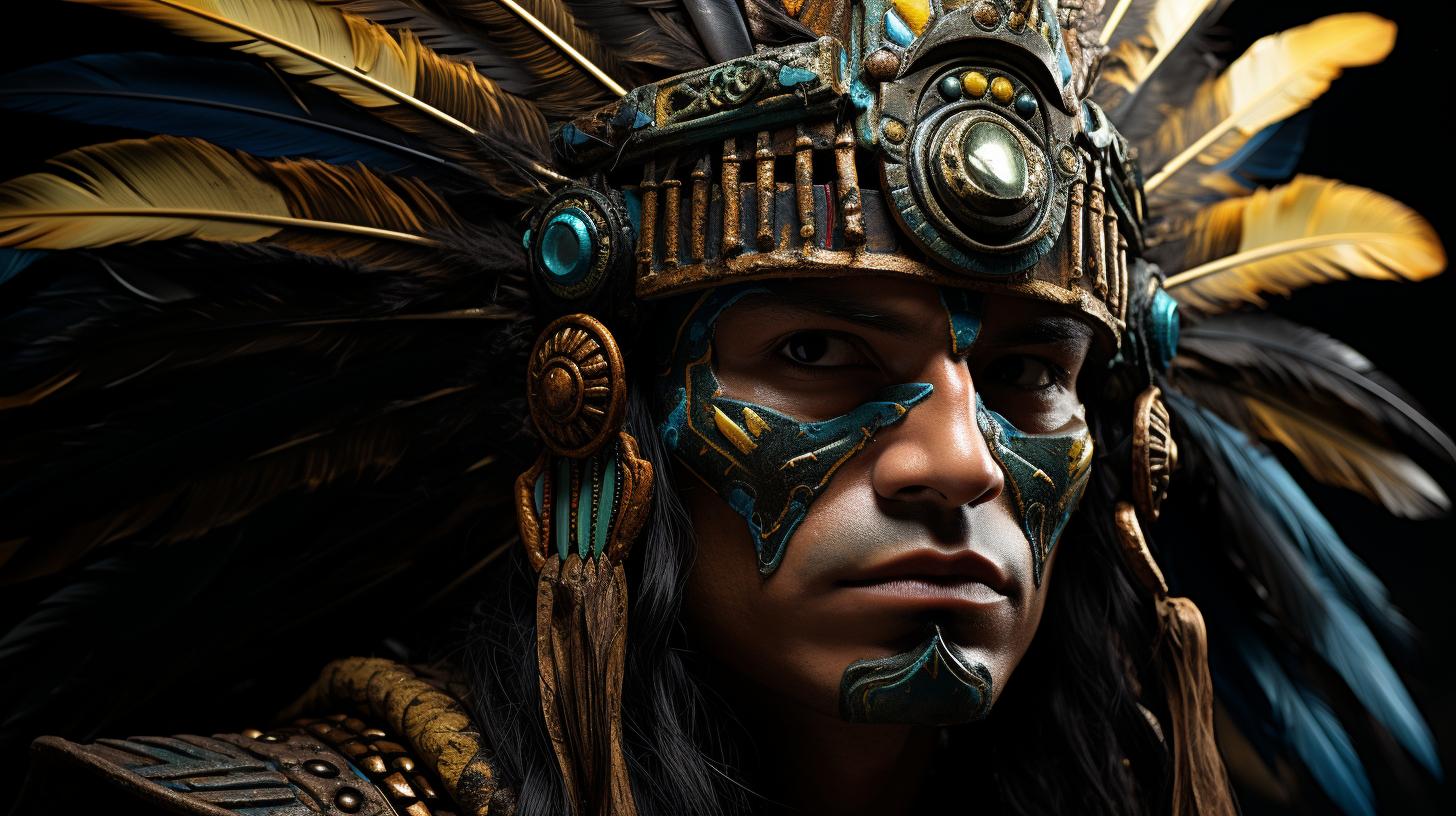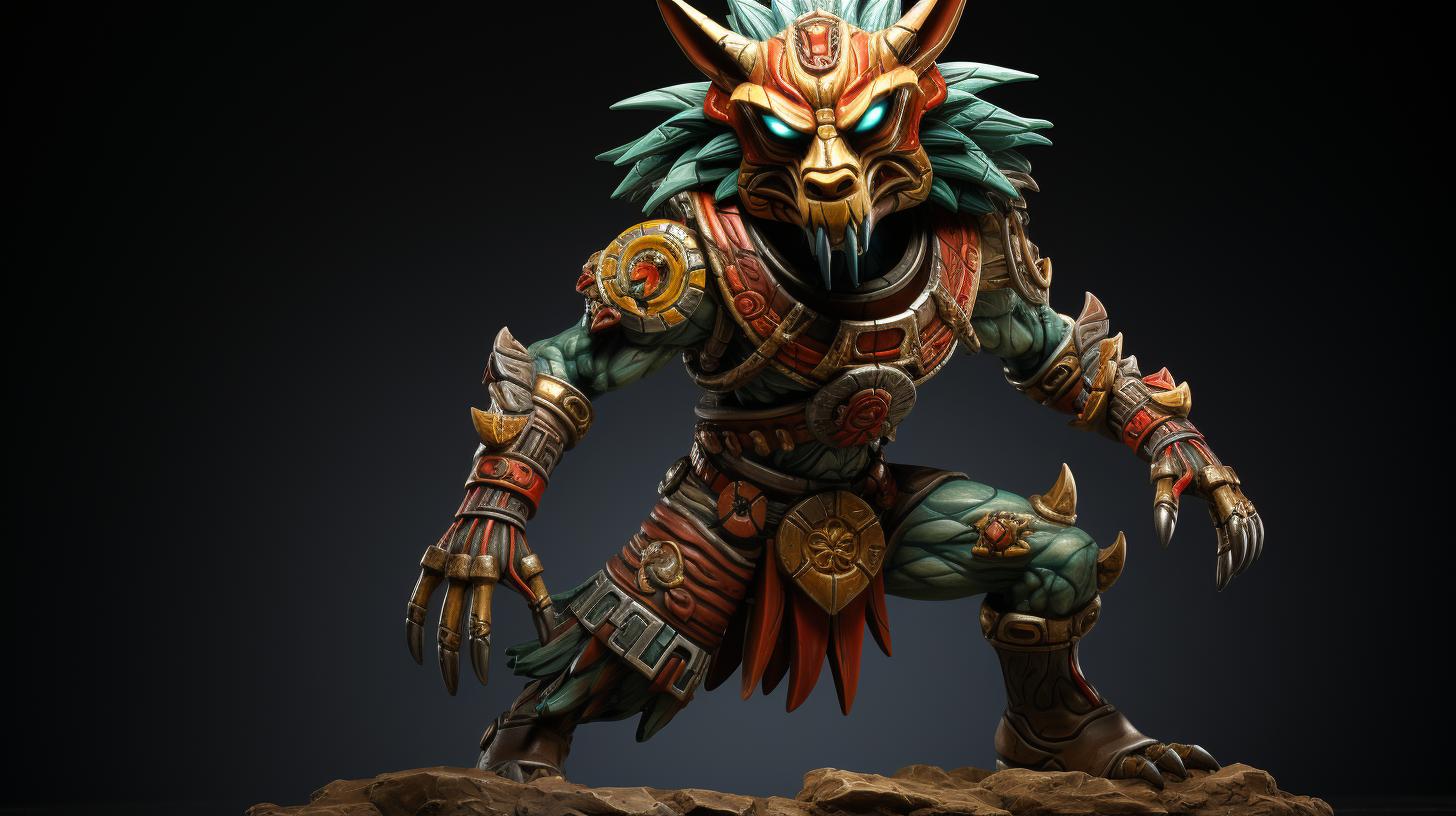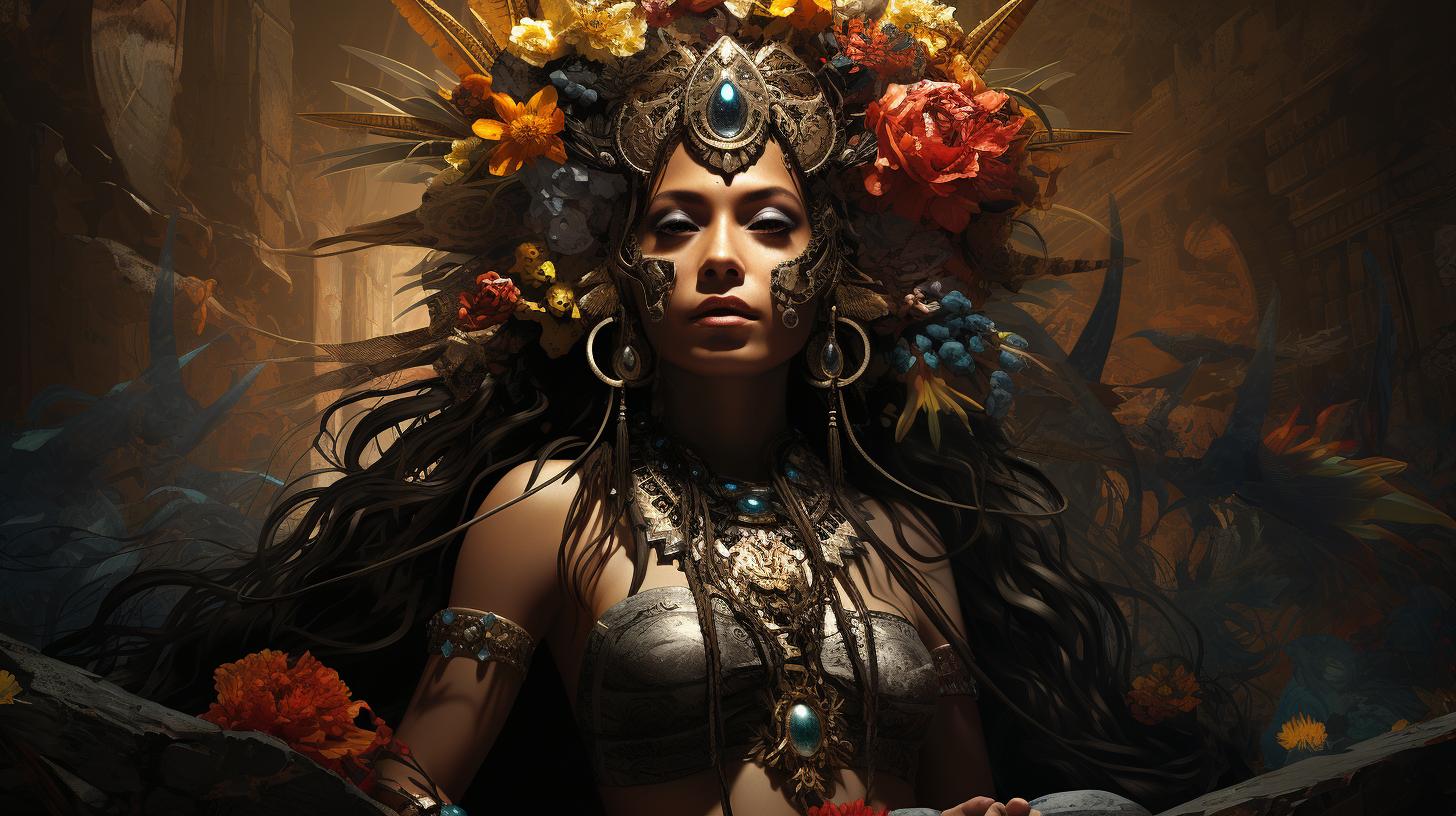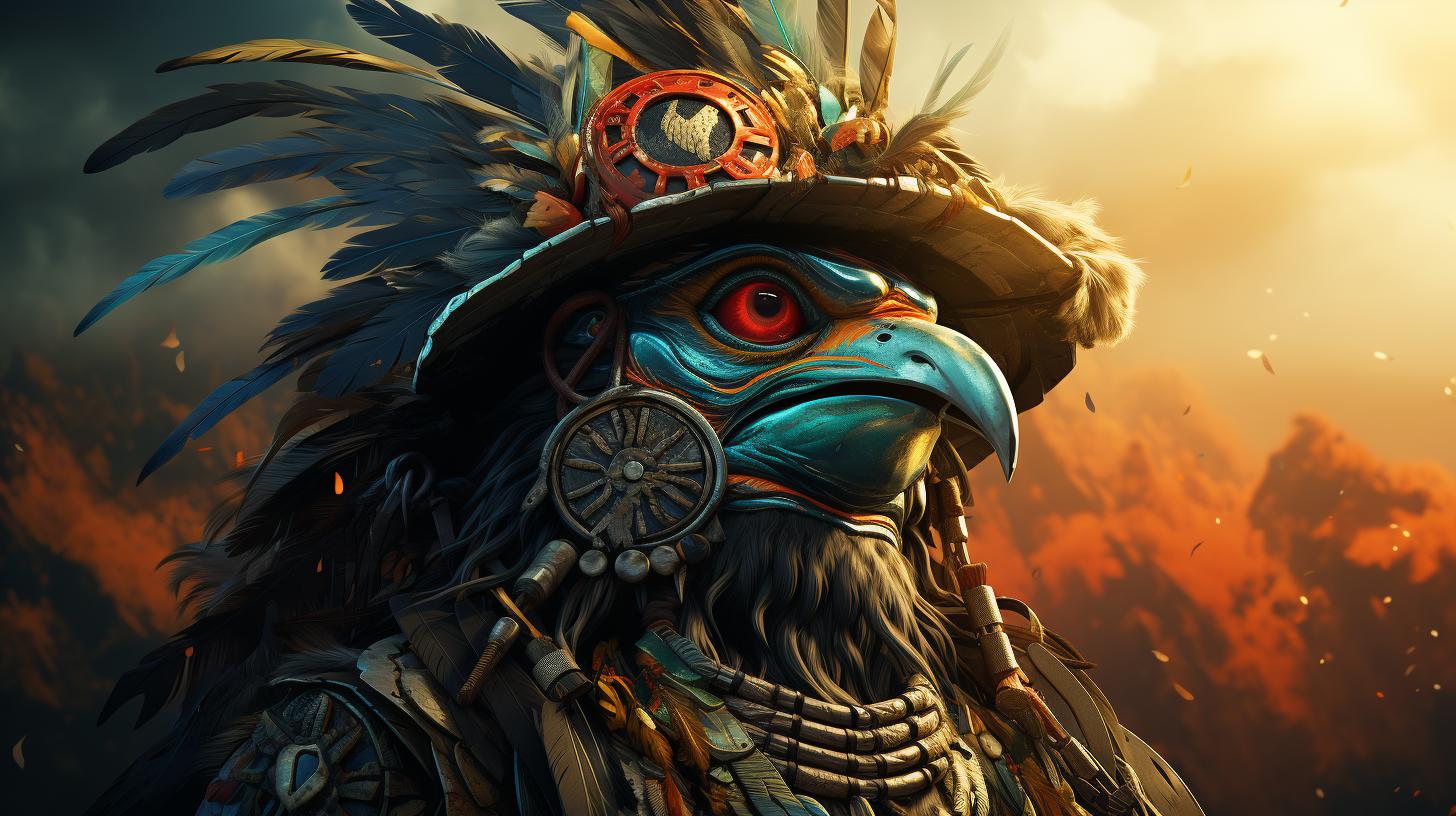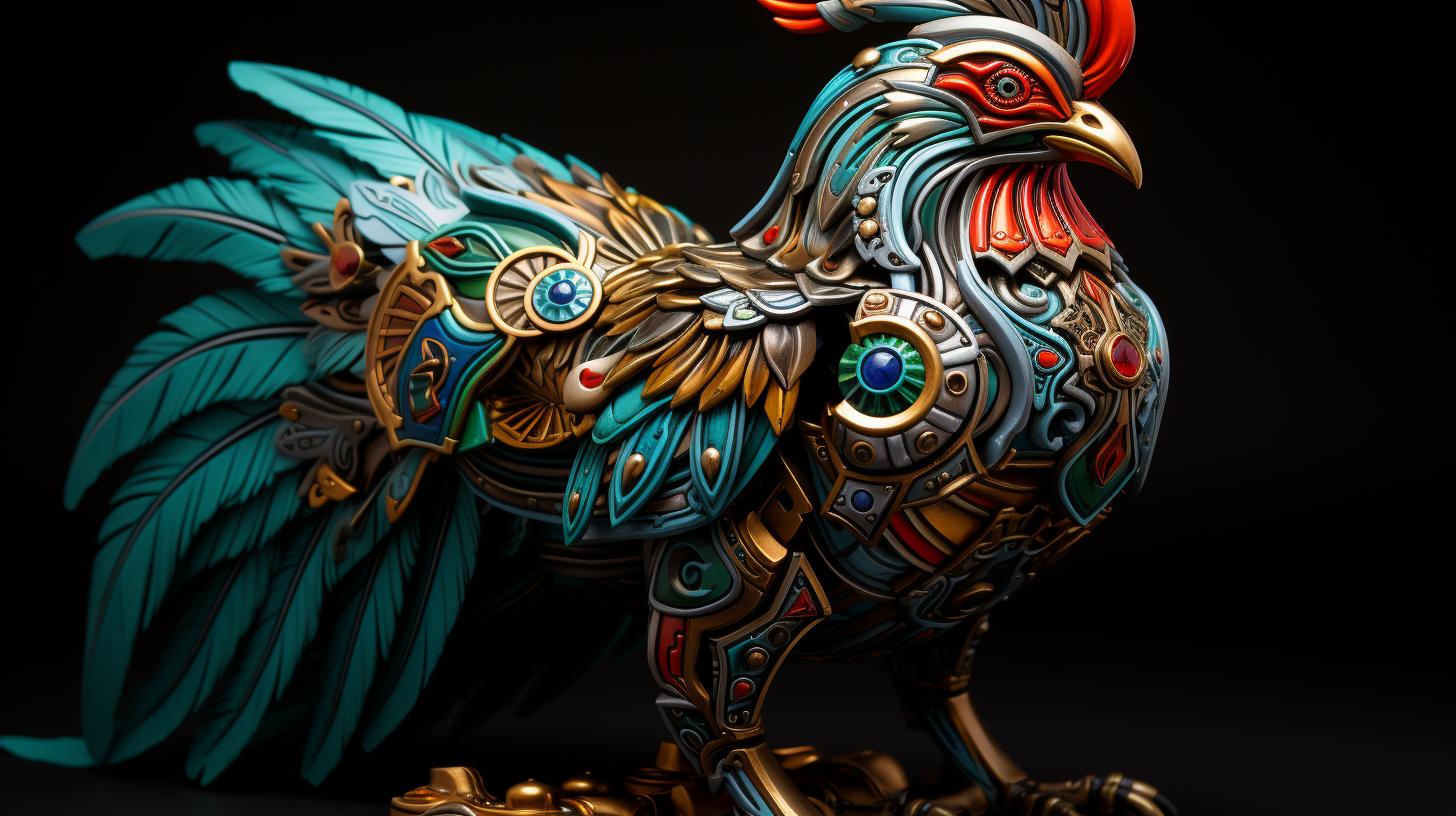Aztec Goddess Coatlicue: Exploring the Mythology and Symbolism of this Ancient Aztec Deity
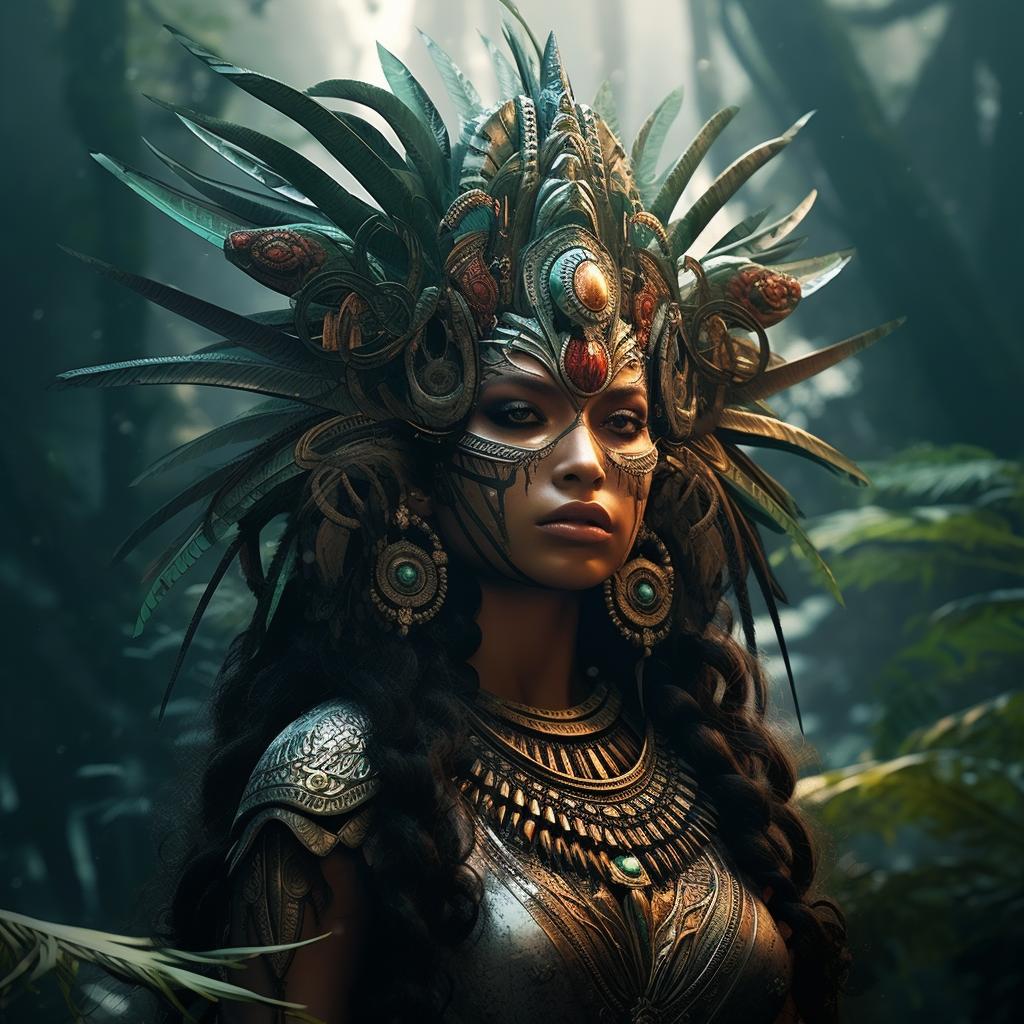
Coatlicue, the Aztec goddess, holds immense significance in Aztec mythology. She embodies the duality of creation and destruction, representing the earth as both the mother of gods and mortals. The deity is depicted as an elderly figure with a serpent-faced head, intertwined serpent skirt, flaccid breasts symbolizing motherhood, and a macabre necklace made of severed hands, hearts, and a skull.
Coatlicue’s various roles include being known as Teteoinnan, the Mother of Gods, and Toci, Our Grandmother. This article delves into the mythology, symbolism, and iconography of Coatlicue, shedding light on her multifaceted nature.
The Mythology and Symbolism of Coatlicue
Coatlicue, the Aztec goddess, holds great significance within the rich tapestry of Aztec mythology. This enigmatic deity embodies various layers of symbolism, representing not only the Earth Mother but also the profound duality of creation and destruction.
Revered as both the mother of gods and mortals, Coatlicue’s mythological persona encompasses a wide range of roles and characteristics. Let’s delve into the captivating aspects of her mythology and explore the profound symbolism she embodies.
The Earth Mother: Coatlicue’s Role in Aztec Culture
Central to Aztec culture, Coatlicue assumes the powerful position of the Earth Mother and holds dominion over fertility and abundance. Aztecs revered her as the progenitor of all life, acknowledging her crucial role in sustaining the balance of nature.
As the embodiment of the earth itself, Coatlicue symbolizes the life-giving force that nurtures and sustains all living beings.
Coatlicue as the Creator and Destroyer
Coatlicue’s multifaceted nature extends beyond her role as the Earth Mother. She embodies the paradoxical essence of creation and destruction, embodying both aspects in equal measure. This duality acknowledges the cyclical nature of existence, where birth and death play an intrinsic role.
As the destroyer, Coatlicue facilitates new beginnings by clearing the path for fresh possibilities.
The Dual Nature of Coatlicue: Mother of Gods and Mortals
One of Coatlicue’s most intriguing aspects is her dual role as the mother of both gods and mortals. She emanates divine maternal power, birthing gods who assume their place within the celestial realms.
Simultaneously, Coatlicue remains connected to mortal existence, embodying the inherent cycle of life, from birth to death. This dichotomy epitomizes the profound connection between the divine and mortal worlds in Aztec cosmology.
Coatlicue’s Iconography and Representation
Coatlicue, the Aztec goddess, is depicted in various forms in Aztec art, reflecting her multifaceted nature. Her iconography offers insights into her symbolism and significance within Aztec culture.
The Serpent-Faced Goddess: Exploring Coatlicue’s Image
Coatlicue’s most distinctive feature is her serpent-faced head, representing her connection to the earth and the primordial forces of nature. This unique aspect underscores her role as a powerful deity associated with creation and destruction.
The Symbolism of the Snake Skirt and Flaccid Breasts
Another significant element of Coatlicue’s iconography is her skirt made of intertwined serpents. This imagery symbolizes the intertwining of life and death, as well as the cyclical nature of existence. Additionally, her flaccid breasts represent her nurturing and motherly aspects, emphasizing her role as the mother of gods and mortals.
The Macabre Necklace: Understanding Coatlicue’s Diet
Coatlicue’s necklace, made of severed hands, hearts, and a skull, depicts her consumption of corpses, highlighting her connection to the cycle of life and death. This macabre symbolism emphasizes her role as a goddess associated with fertility, regeneration, and the natural decay of living beings.
The Power of Claws: Coatlicue’s Fingers and Toes
Coatlicue’s fingers and toes take the form of sharp claws, symbolizing her fierce and protective nature. These claws represent her ability to defend her children and ward off any threat to balance and harmony.
They reflect her role as a guardian and a powerful force in the Aztec pantheon.
Through her striking visual representation, Coatlicue’s iconography communicates her attributes as a deity associated with creation, destruction, fertility, and protection. Understanding the symbolism behind her image enhances our appreciation for the complex and profound role she played in Aztec mythology.
Coatlicue’s Various Names and Roles
Coatlicue, the Aztec goddess, is known by different titles that reflect her multifaceted nature and diverse roles within Aztec mythology.
Teteoinnan and Toci: The Titles of Motherhood
Teteoinnan, meaning “Mother of Gods,” and Toci, which translates to “Our Grandmother,” are two significant titles attributed to Coatlicue. These titles emphasize her role as a maternal figure in Aztec culture.
As Teteoinnan, she is revered as the mother who gave birth to the Aztec deities, symbolizing her power and connection to the divine. Toci, on the other hand, highlights her nurturing and protective nature, reflecting her role as a caring grandmother figure.
Cihuacóatl: Coatlicue as the Fearsome Birth Goddess
Cihuacóatl, often associated with Coatlicue, embodies the terrifying aspect of the birthing process. As the fearsome birth goddess, she represents the pain, dangers, and ultimate power of bringing life into the world.
This aspect of Coatlicue emphasizes the complexities of motherhood, acknowledging the physical and emotional challenges inherent in childbirth.
Tlazoltéotl: The Goddess of Sexual Impurity
Tlazoltéotl, the goddess of sexual impurity and incorrect behavior, is another role attributed to Coatlicue. As Tlazoltéotl, Coatlicue embodies the complexities of human desires and acts outside conventional norms. She represents the transformative power of sexuality and the potential for both purity and impurity within human experiences.
These various names and roles of Coatlicue highlight her significance as a maternal figure, a fierce birth goddess, and a symbol of sexual impurity. Each title explores different aspects of her character, contributing to the intricate tapestry of Aztec mythology and reflecting the diverse beliefs and values of the Aztec people.
Coatlicue’s Connection to Huitzilopochtli
Coatlicue, the Aztec goddess of the earth and motherhood, plays a crucial role in the mythology surrounding Huitzilopochtli, the powerful god of war. Through a miraculous pregnancy and a fierce battle, Coatlicue’s connection to Huitzilopochtli shapes the Aztec belief system and explains significant events in their history.
The Miraculous Pregnancy and the Birth of Huitzilopochtli
The story begins with Coatlicue’s miraculous pregnancy, which astonished both gods and mortals. According to Aztec mythology, Coatlicue found a bundle of feathers while sweeping near the Templo Mayor. She placed the feathers in her bosom, and without any male involvement, she became pregnant with Huitzilopochtli, the god destined for greatness.
When Coatlicue’s other children, including her daughter Coyolxauhqui and the Centzon Huitznahua, learned of her pregnancy, they were overwhelmed with jealousy and conspired to kill her. However, Huitzilopochtli, still in her womb, revealed his divine nature and protected his mother, ensuring his survival.
The Battle of Coatlicue’s Children and Huitzilopochtli‘s Victory
Upon his miraculous birth, Huitzilopochtli embarked on a daunting mission to protect his mother and secure his dominion over the Aztecs. His siblings, led by Coyolxauhqui, launched a ferocious attack on Coatlicue, seeking revenge for their failed attempt to destroy her during pregnancy.
However, Huitzilopochtli, with his formidable warrior skills, confronted the attacking siblings. In a fierce battle, he decapitated Coyolxauhqui, casting her head into the sky where it became the moon, a constant reminder of Huitzilopochtli‘s triumph over his enemies.
The Templo Mayor: Commemorating the Battle and Coatlicue’s Warning
To commemorate Huitzilopochtli‘s victory and Coatlicue’s pivotal role, the Aztecs constructed the Templo Mayor in their capital city of Tenochtitlan. This grand temple served as a sacred site for worship, where the Aztecs honored their gods and made offerings to ensure their favor and protection.
Coatlicue, being the mother of Huitzilopochtli and an influential goddess, used the Templo Mayor to deliver a warning to the Aztec people. She foretold the downfall of their cities and empires.
Only when this prophecy was fulfilled would Huitzilopochtli return to her side, marking a significant shift in Aztec civilization and the inevitability of their future decline….











